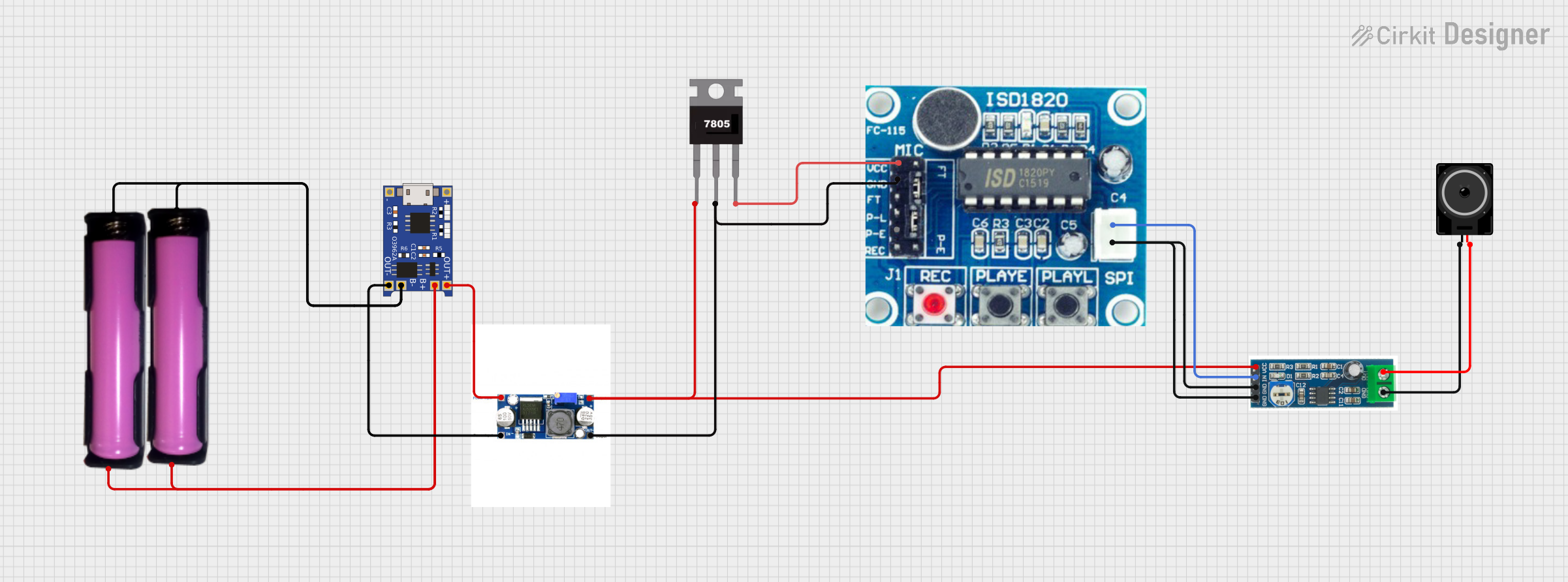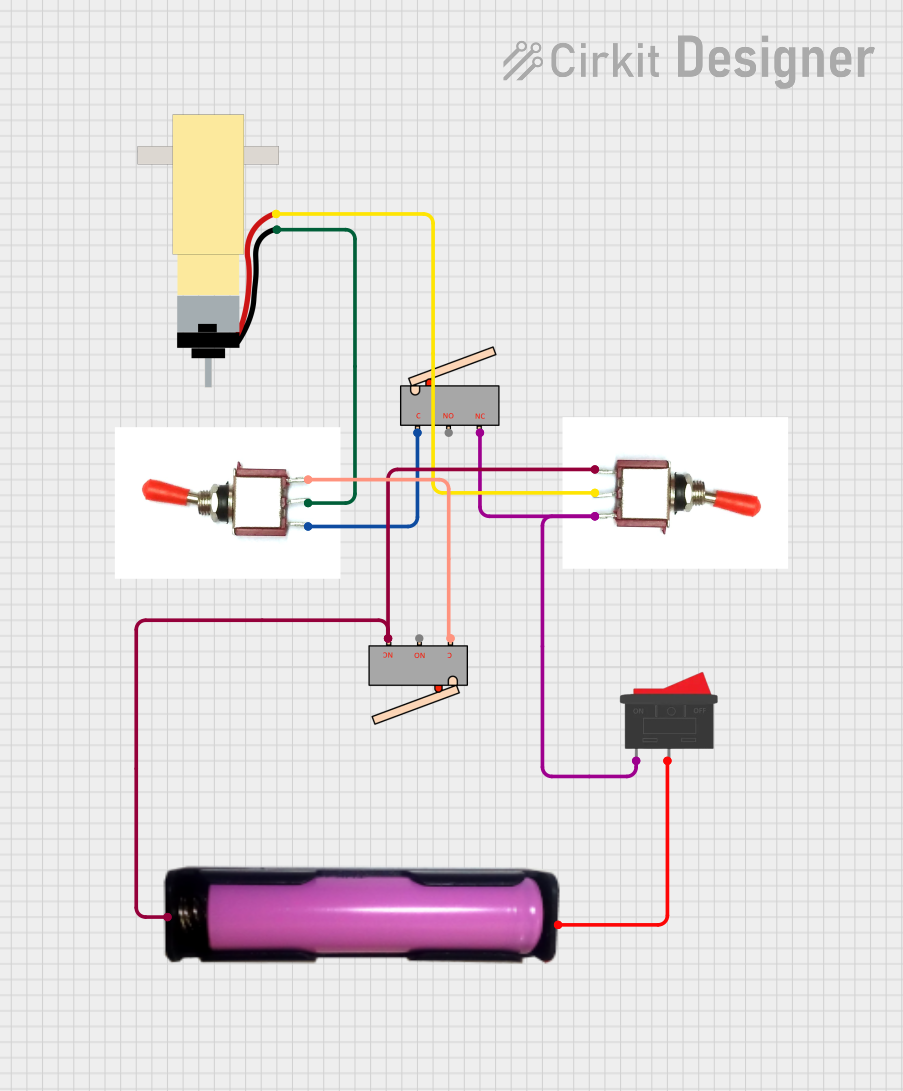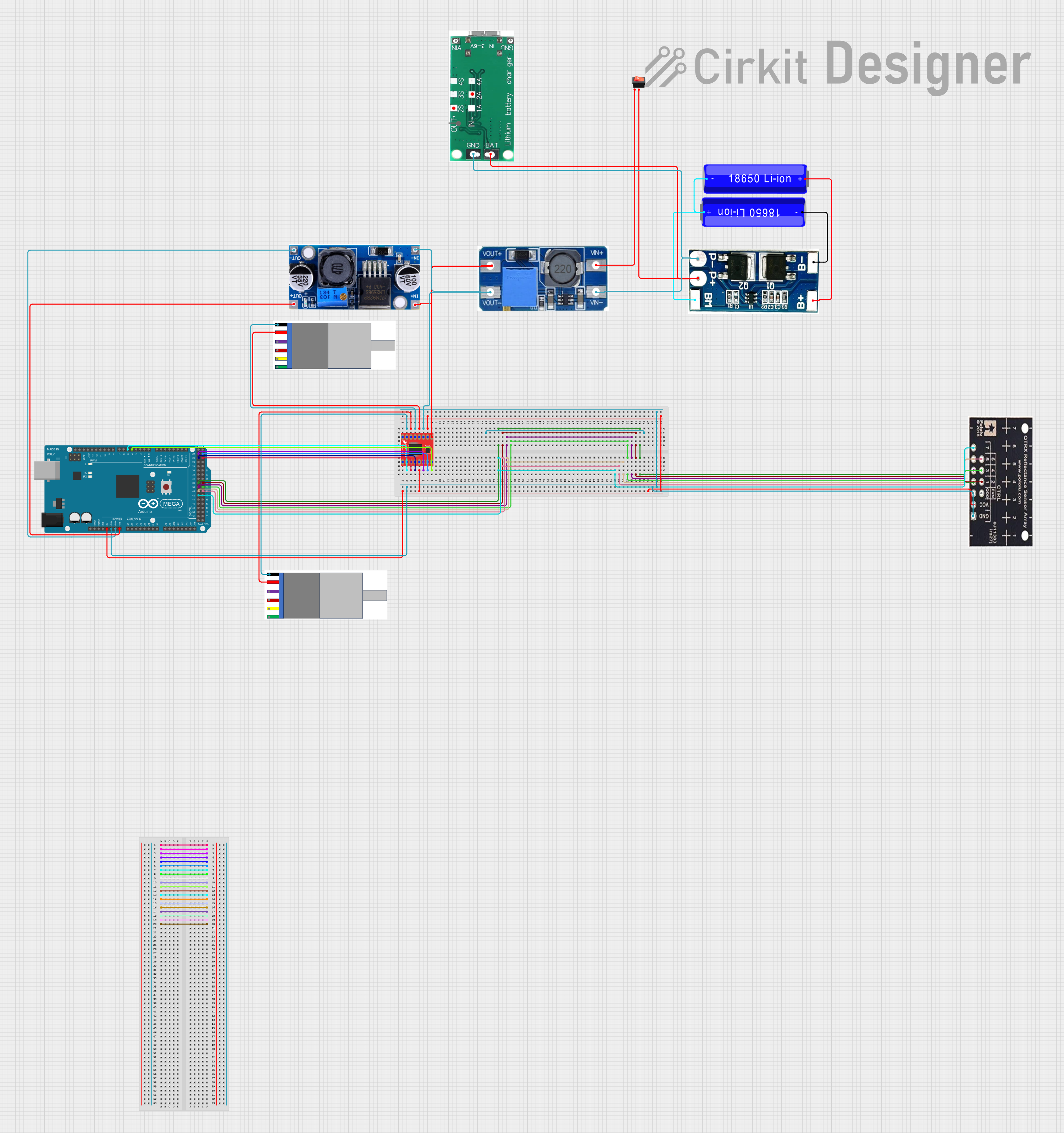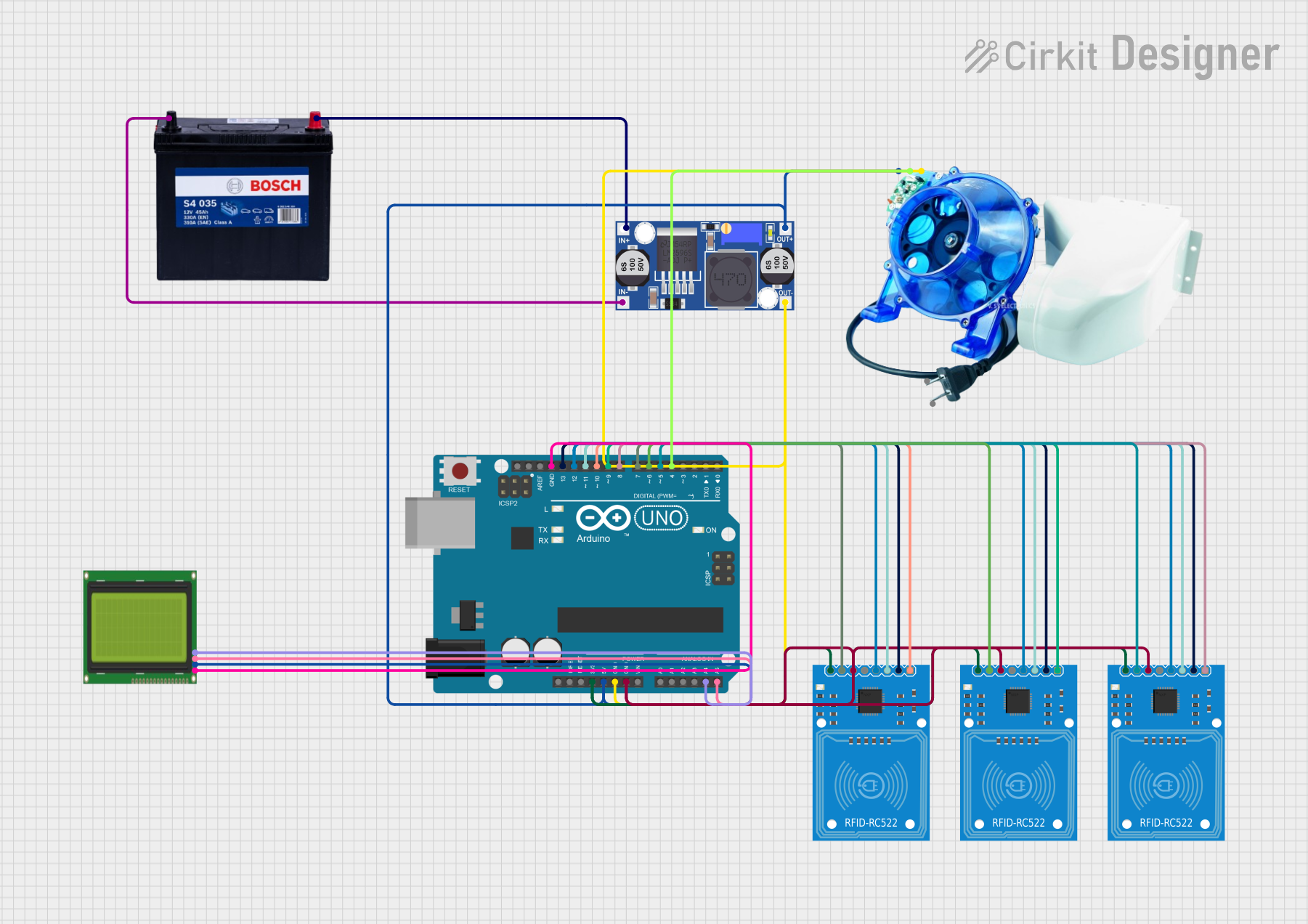
How to Use 18650 in holder: Examples, Pinouts, and Specs

 Design with 18650 in holder in Cirkit Designer
Design with 18650 in holder in Cirkit DesignerIntroduction
The 18650 battery holder is a device designed to securely house a single 18650 lithium-ion rechargeable battery cell. This type of battery is widely used due to its high energy density, long life, and stable performance. The holder allows for easy insertion and removal of the battery, making it convenient for applications where battery replacement is necessary. Common applications include portable electronics, flashlights, electric vehicles, and as a power source for DIY projects, including those involving microcontrollers like the Arduino UNO.
Explore Projects Built with 18650 in holder

 Open Project in Cirkit Designer
Open Project in Cirkit Designer
 Open Project in Cirkit Designer
Open Project in Cirkit Designer
 Open Project in Cirkit Designer
Open Project in Cirkit Designer
 Open Project in Cirkit Designer
Open Project in Cirkit DesignerExplore Projects Built with 18650 in holder

 Open Project in Cirkit Designer
Open Project in Cirkit Designer
 Open Project in Cirkit Designer
Open Project in Cirkit Designer
 Open Project in Cirkit Designer
Open Project in Cirkit Designer
 Open Project in Cirkit Designer
Open Project in Cirkit DesignerTechnical Specifications
Key Technical Details
- Battery Type: 18650 Lithium-Ion Rechargeable Cell
- Voltage: Typically 3.7V (nominal)
- Current: Depends on the specific 18650 cell used
- Material: Durable plastic with metal contacts
Pin Configuration and Descriptions
| Pin | Description |
|---|---|
| + | Positive terminal connection point |
| - | Negative terminal connection point |
Usage Instructions
Installing the Battery
- Ensure the 18650 battery is charged and in good condition.
- Open the holder's cap or latch, depending on the design.
- Insert the 18650 battery into the holder with the positive end aligning with the
+terminal and the negative end with the-terminal. - Close the holder securely to ensure a good electrical connection.
Connecting to a Circuit
- Connect the
+terminal of the holder to the positive power input of your circuit. - Connect the
-terminal of the holder to the ground of your circuit. - Ensure all connections are secure and insulated to prevent short circuits.
Best Practices
- Always verify the polarity before connecting the battery to avoid damage.
- Do not expose the battery holder to high temperatures or moisture.
- When not in use, remove the battery to prevent slow discharge.
- Check the battery voltage regularly to avoid over-discharge.
Example: Connecting to an Arduino UNO
// Example code for powering an Arduino UNO with a 18650 battery
void setup() {
// Initialize digital pin LED_BUILTIN as an output.
pinMode(LED_BUILTIN, OUTPUT);
}
void loop() {
// Turn the LED on (HIGH is the voltage level)
digitalWrite(LED_BUILTIN, HIGH);
// Wait for a second
delay(1000);
// Turn the LED off by making the voltage LOW
digitalWrite(LED_BUILTIN, LOW);
// Wait for a second
delay(1000);
}
Note: The Arduino UNO requires a voltage of 5V; therefore, a voltage step-up converter is needed when using a 3.7V 18650 battery.
Troubleshooting and FAQs
Common Issues
- Battery not charging: Ensure the charger is functioning and the contacts are clean.
- Power not reaching the circuit: Check for loose connections and ensure the holder's terminals are making proper contact with the battery.
- Battery drains quickly: Verify that the battery is in good condition and the circuit does not have any unintended current drains.
FAQs
Q: Can I use any 18650 battery with this holder? A: Most 18650 batteries will fit, but always check the battery's dimensions and specifications.
Q: Is it safe to leave the battery in the holder for extended periods? A: It is generally safe, but to prevent slow discharge or potential leakage, it is advisable to remove the battery if not in use for long periods.
Q: Can I recharge the battery while it's in the holder? A: This depends on the holder's design. Some holders come with built-in charging circuits, while others do not support in-holder charging.
Q: How do I know if the battery is inserted correctly? A: The battery should fit snugly, and the holder's terminals should align with the battery's positive and negative ends.
For further assistance, consult the battery holder's manufacturer or seek advice from experienced electronics professionals.